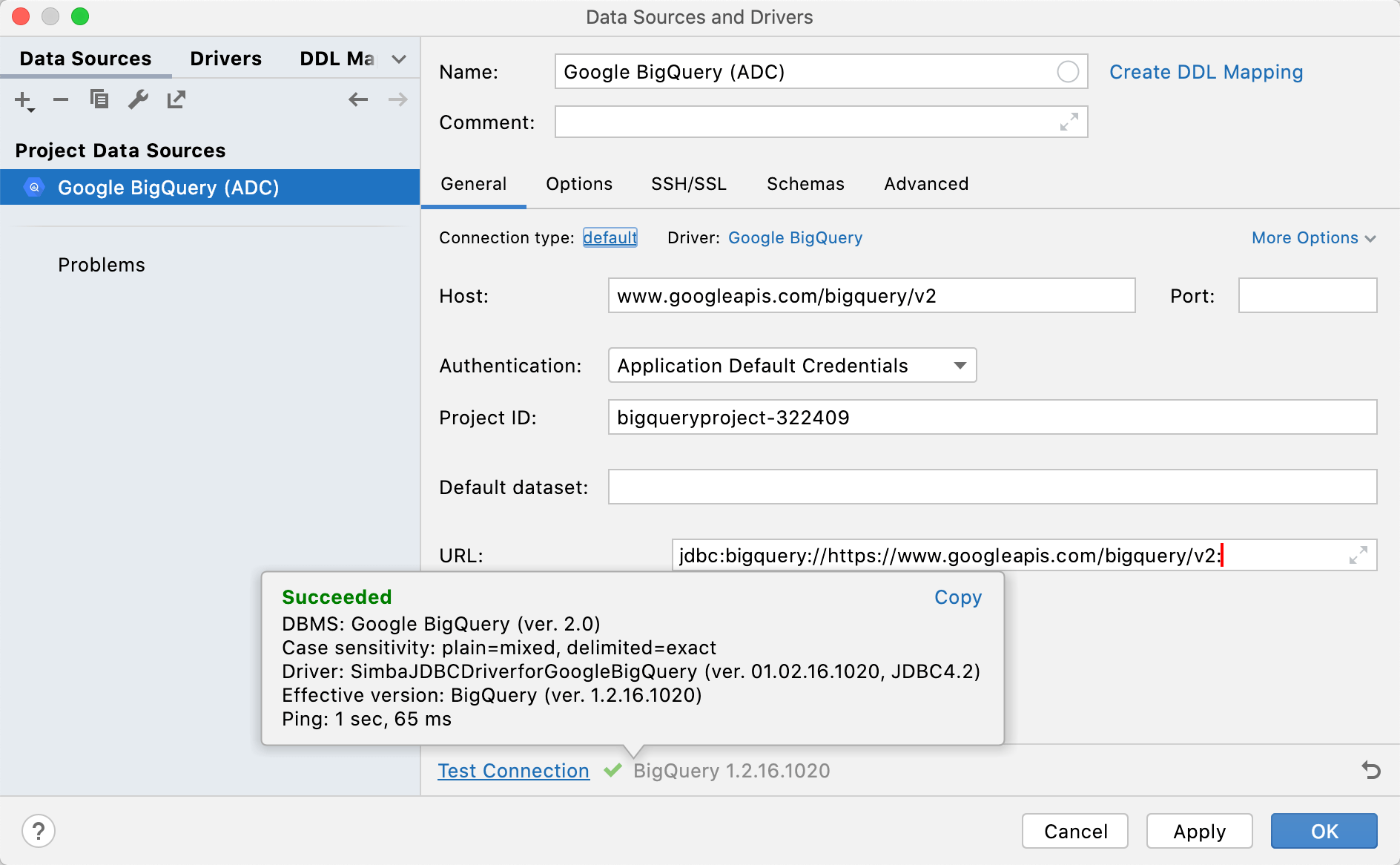
- #BIGQUERY DATAGRIP HOW TO#
- #BIGQUERY DATAGRIP UPDATE#
- #BIGQUERY DATAGRIP DRIVER#
- #BIGQUERY DATAGRIP UPGRADE#
Now all the dishes are on the table, let’s enjoy our data meals. One more click of the chosen table to see the list of its columns names In DataGrip, you just need to click the small box next to the data source name, choose the schemas that you want to explore, then click refresh. 1 Dataset overviewįirst of all, we need an overview of the dataset that we’re about to work with: a list of tables and views, as well as their columns names. They’re all basic SQL syntax, so if you’re using a different version of the SQL language (MySQL, SQL server, BigQuery, etc.), there would be little or no syntax conversion needed. Note: In this article, I use Snowflake public dataset and Snowflake SQL commands for all SQL queries.
#BIGQUERY DATAGRIP HOW TO#
So why don’t follow me step by step on how to perform EDA easily with the great help of Datagrip and SQL.

It’s like saying ‘hi’ to your fellow lovely dataset so that we could gain confidence in every extracted information we get from the data later on. This is the first and foremost step to do at the beginning of any project, before we jump into more sophisticated work like refactoring or modeling.

Next, let’s define the connection URL template.Exploratory Data Analysis (EDA) is something that we do pretty frequently. In the Dialect drop-down, select Generic SQL. Under the Class drop-down, now you can select “ 42.Driver” from it. jar” files from the newly created directory. Once you downloaded the driver, go back to the IDE, and in the Additional files section, click on “ +” and add all the “. Download the “ JDBC 4.2-compatible” zip file, named “ SimbaJDBCDriverforGoogleBigQuery42_1.zip” at the time of writing, then unpack it into a new directory.
#BIGQUERY DATAGRIP DRIVER#
You can download the BigQuery JDBC driver from this page. You will notice that there is a section called Driver files. Start by changing the name of the configuration to “ BigQuery”. Go to Database Tool Window, then select Data Source Properties, click on the “ +” button and then, at the bottom of the list you’ll see an entry named Driver, click on this. Now, back to the IDE, we need to add a new Data Source. Note: Make sure you place that file in a safe place as it will allow anything with rights to read it to connect to your BigQuery dataset you are allowed to access. A credentials file will be downloaded and you can click on the Close button on the dialog. Make sure that the Key Type is set to JSON, then click on the Create button. Type the name of the account, for example “ datagrip”, in the Role section, select the BigQuery | BigQuery Data View, BigQuery | BigQuery Job User, and BigQuery | BigQuery User roles, then check the Furnish a new private key box. Make sure you have the right project selected, then click on the Create service account button. Update: if you prefer to watch a video instead of reading this post, please see a recent version of this tutorial created in April 2019.įirst, let’s get all the details needed to connect to BigQuery from the Cloud Console. BigQuery is a low-cost enterprise data warehouse designed to handle data analytics at a massive scale.Ĭurrently, DataGrip does not come with a built-in connector for BigQuery, so let’s connect the IDE to it.
#BIGQUERY DATAGRIP UPGRADE#
If you are still using such a version, we encourage you to upgrade to the latest IDE version and check out the native support.Ĭontinuing the series of posts on how to connect DataGrip (or any other IntelliJ-based IDE) to various data sources, in this post we’ll show you how to connect to Google’s BigQuery. This article covers support pre-2021.1 for BigQuery. To learn how to use this, head over to our Documentation.

#BIGQUERY DATAGRIP UPDATE#
Florin Pățan The 2021.1 update brings full native support for BigQuery.


 0 kommentar(er)
0 kommentar(er)
